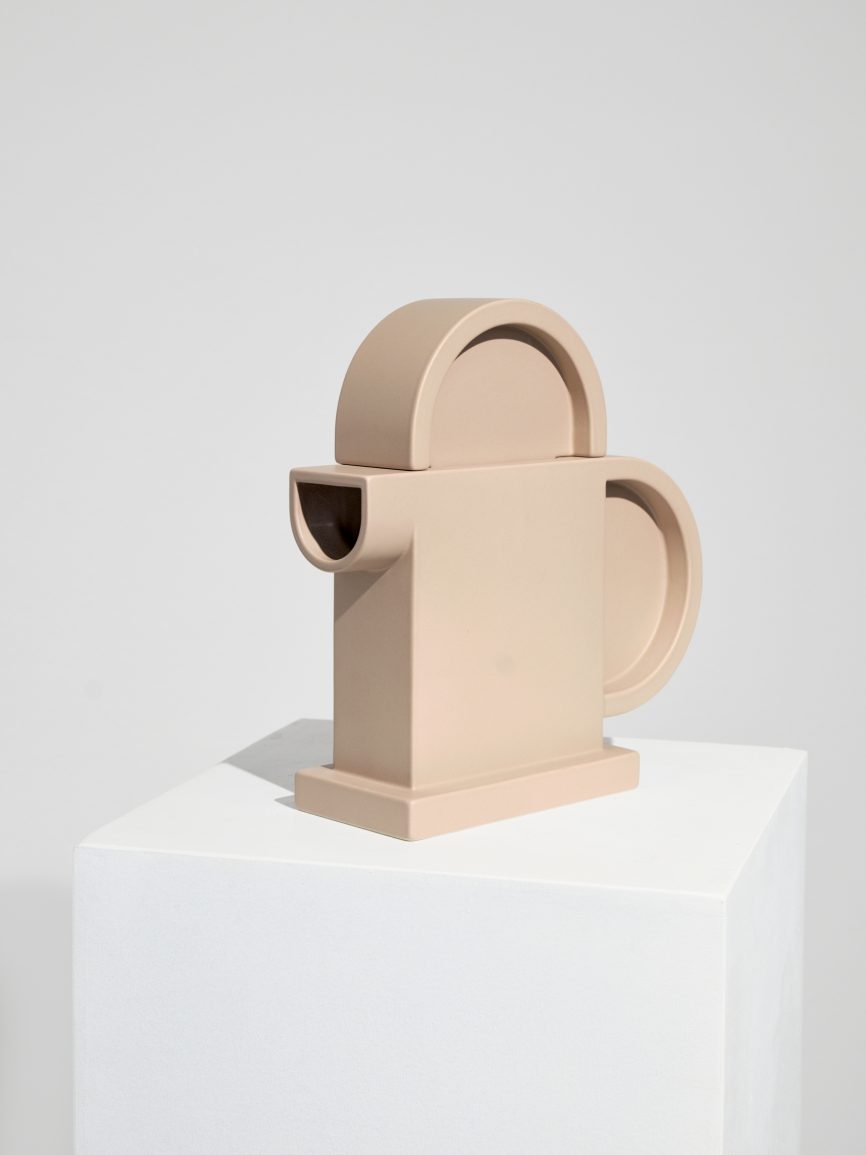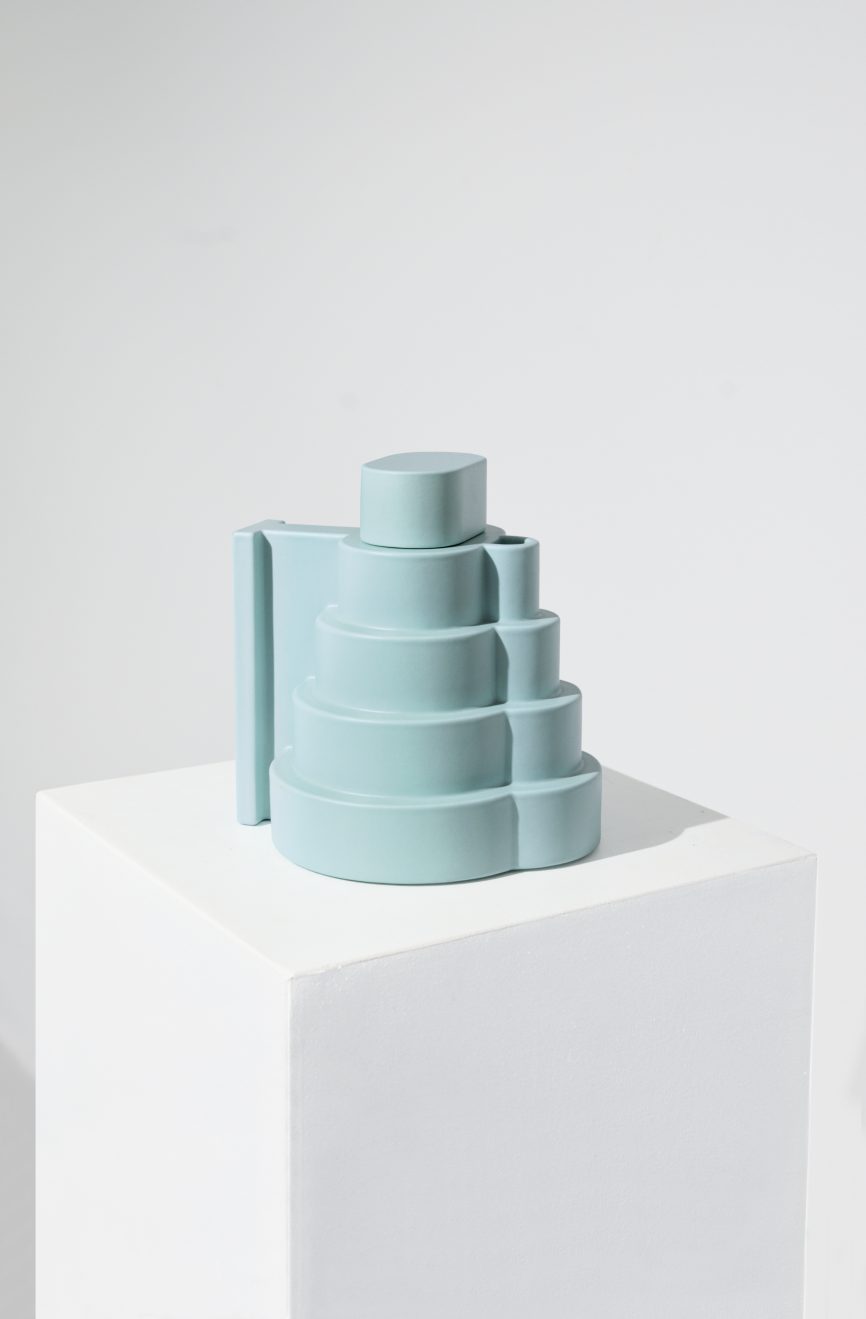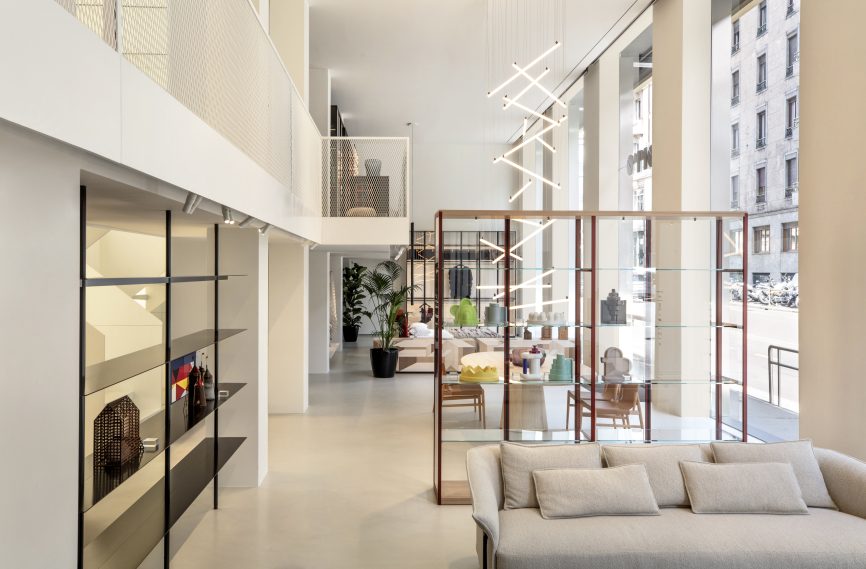After 20 years in the Durini area of Milan, Italian furniture maker Porro changed its address and officially opened the new showroom in via Visconti di Modrone, in the heart of the city. Housed in a street-facing building with large windows, the store’s interiors are designed by Piero Lissoni, the brand’s art director, and are spread across two floors. “Piero Lissoni designed the new Porro showroom as a theatrical space, a white stage open to the city and filled with our furnishings, but also works of art and objects rich in emotional meanings,” says Maria Porro, head of marketing and communication of the brand, and also the president of Salone del Mobile.
“Architecture, theatre, art and design coexist in these unique objects where knowledge converges and is linked by a common thread of emotions,” she adds. The geometrical Linea containers designed by Alessandro Mendini in 2015, the soft lines of a burgundy Byron bed by Piero Lissoni, and a black-and-white Storage Battente closet are the stars, as is the antique red metal structure of the Ex-Libris glass cabinet. As you walk among the tables, systems and bookcases, you can enjoy pieces by design masters like Achille Castiglioni and Murano artworks by Michela Cattai. Instead of the traditional white mannequin dresses, daring creations by hat designer Francesco Ballestrazzi and captivating virtuosities by the costume design studio SlowCostume hang in closets and cabinets. There are tributes to Bruno Munari, the artist designer who designed the Porro logo in the 1960s, as well as works from Alessandro Mendini’s private collection.

However, a pleasant surprise sits in the classic Porro cabinet, the Ex-Libris. The Indian Memory is a set of six teapots and two fruit bowls designed by Ettore Sottsass in the 1970s based on the profiles of Indian temples: “As an experiment with forms that blend architecture, sculpture and design, these ceramics are in perfect harmony with the geometric purity and architectural essence of Porro design, like the Ex-Libris that contains them,” says Porro. “It suggests how Italian design has always been curious to open up to the cultures of the world, including India’s that is so rich in symbolism.”
The collection, like many other art objects now on display in the showroom, is from collector Antonia Jannone’s Milanese gallery: the pieces will be on display until Salone del Mobile in April and can be purchased directly from the gallery. “Massimo Lissoni [Piero Lissoni’s brother] and Maria Porro came to see me a few months ago to choose the pieces for the showroom,” says Jannone. “They were utterly impressed by the ceramics.” Called Basil, Chamomile, Cardamom, Cherries, Cinnamon, Lapis Lazuli, Pepper and Sugar, they have simple names and a complicated backstory. The pieces were designed by Ettore Sottsass after a long trip to India in 1961, whose trace can be found in a story for Domus magazine, published in three episodes: “Ettore Sottsass travelled extensively: United States, China, India…,” explains Jannone.

“He made incredible trips around the world with his wife, Barbara Radice, and his inseparable camera.” The ceramics were created around 1972, in wood models, but it was only in 1987 that Rainer Krause, the founder of Anthologie Quartett, acquired the rights. In collaboration with master ceramist Alessio Sarri, he decided to produce them in colours that Sottsass desired; opaque and dusty. This is how the Indian
Memory made a debut at the Jannone Gallery, presented with a large cake in the shape of a Lapis Lazuli teapot on Sottsass’s 70th birthday—and now seen here at the new Porro showroom.
The post Porro in Milan showcases Ettore Sottsass and his Indian connection appeared first on Architectural Digest India.




